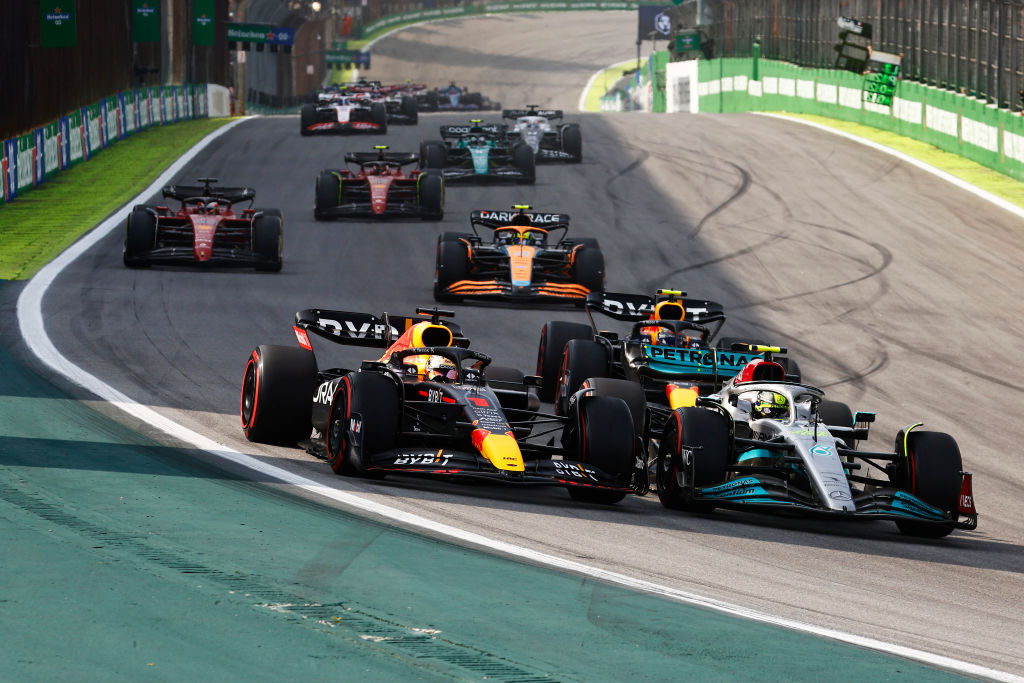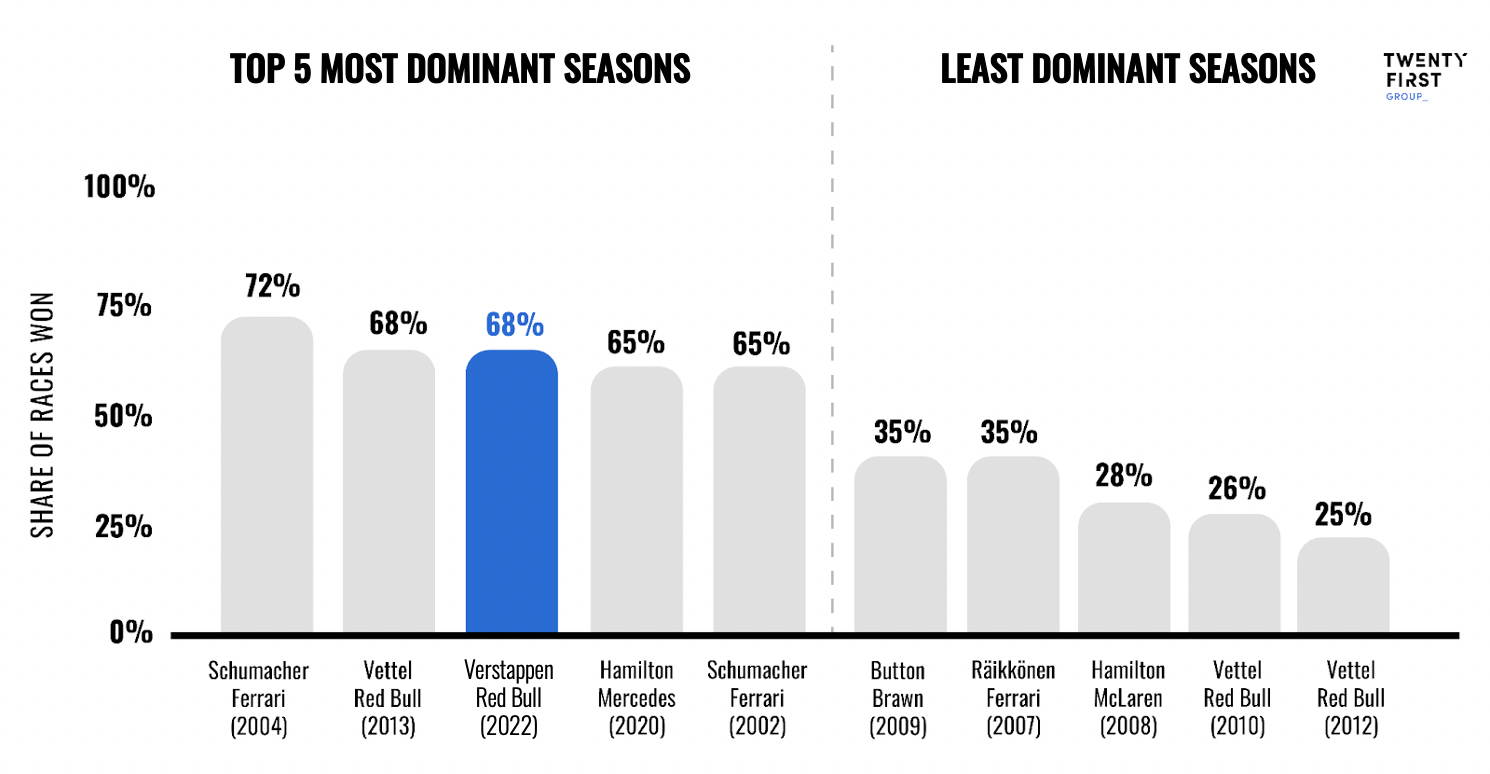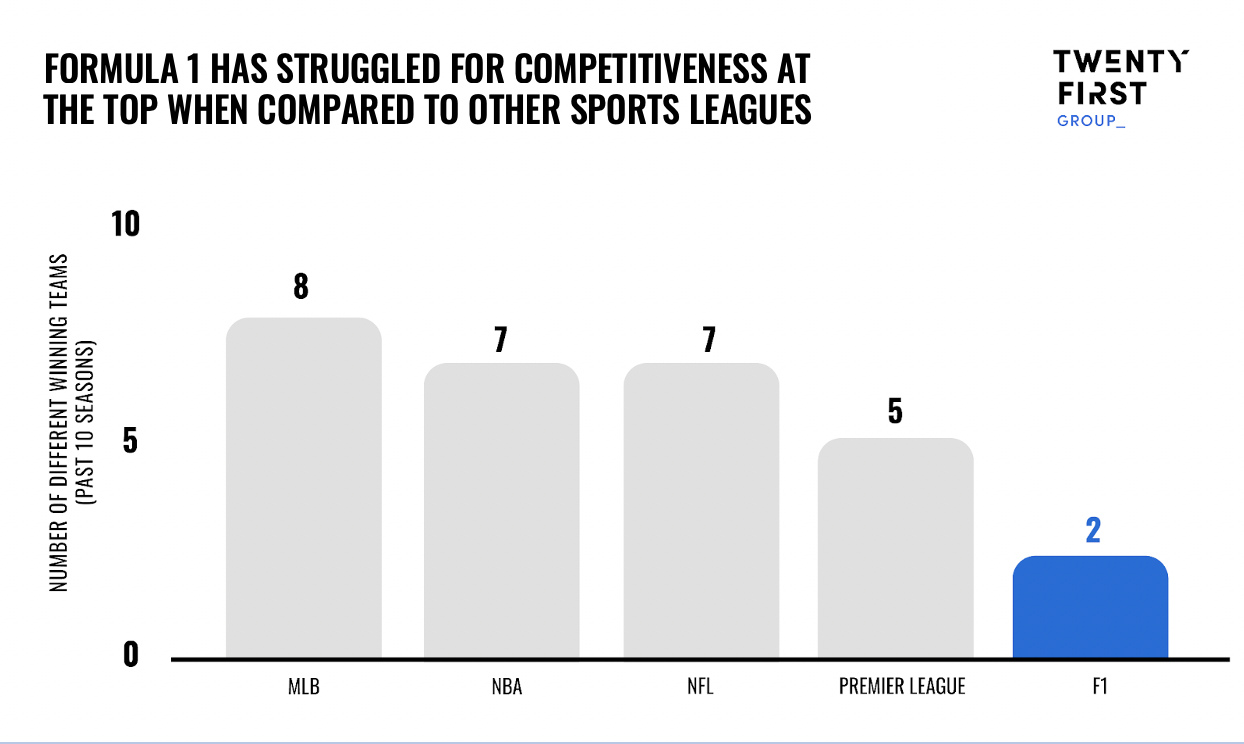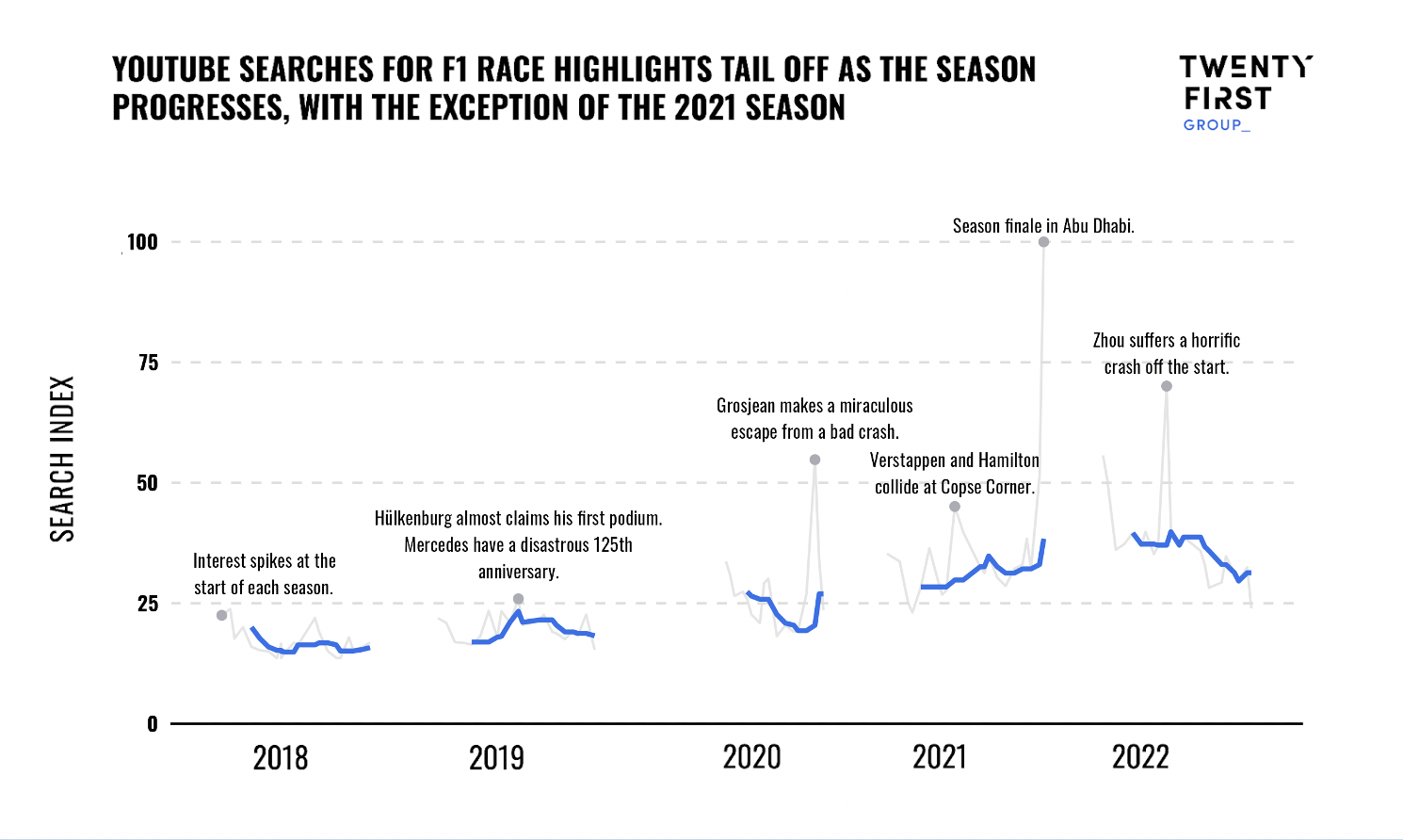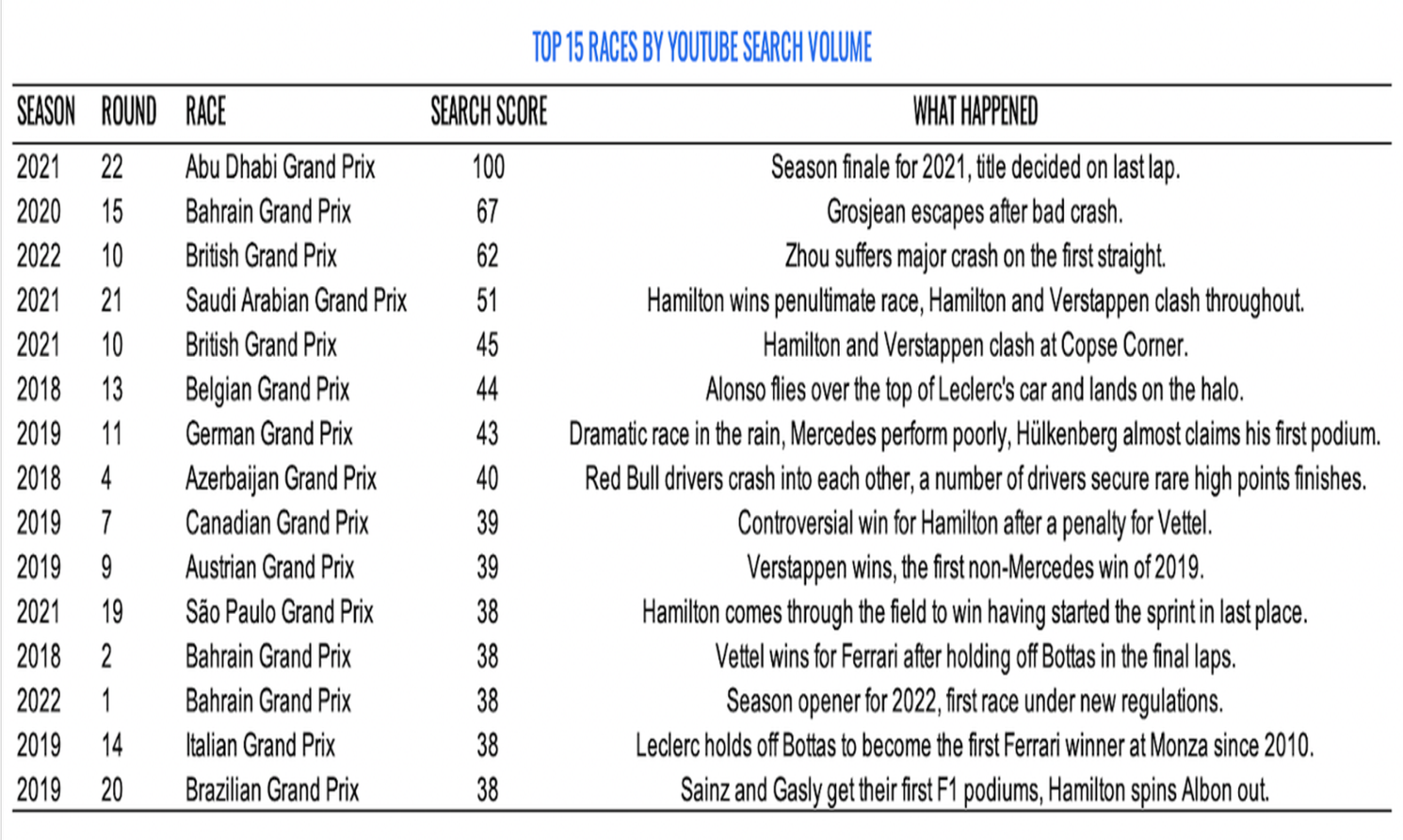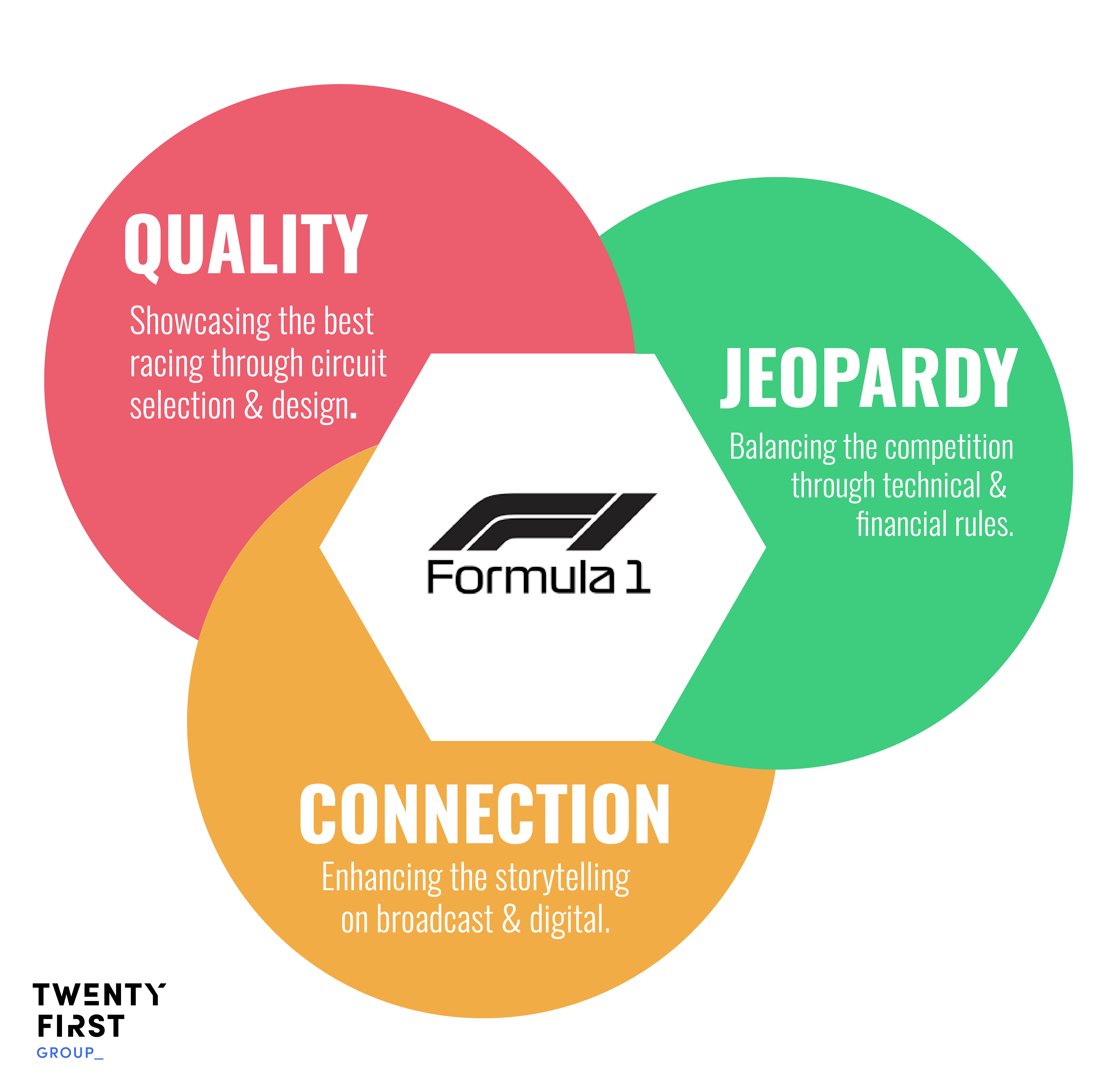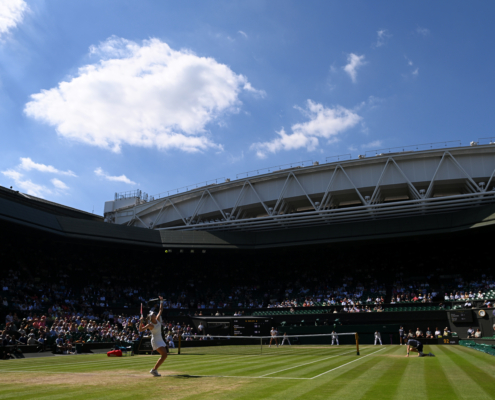Thought Leadership
Does F1 Have a Competitiveness Problem?
9 MIN READ
Thought Leadership
Inspired by what you’re reading? Why not subscribe for regular insights delivered straight to your inbox.
The 2023 Formula 1 season starts this weekend, with the sport looking to further capitalise on its surge in popularity since the launch of the Netflix documentary Drive to Survive.
As new fans flooded in, F1 also benefited from one of the closest battles for the Drivers Championship in years in 2021, when Max Verstappen and Lewis Hamilton were neck-and-neck going into the final race of the season with the title controversially decided on the very last lap. However, last season didn’t live up to the same height despite a set of new technical regulations designed to shake up the order of teams at the top. Instead of the closer, more competitive racing desired across the grid, there was one car that was way ahead of the pack, as Max Verstappen and Red Bull enjoyed one of the most dominant seasons in the sport over the past twenty years.
Unfortunately this is not a new problem for F1. Over the past ten seasons, there have only been two different winners of the Constructors’ Championship: Red Bull and Mercedes. Compared to the highest revenue generating sports leagues in the world, there is a clear lack of competition at the top.
The question and concern for the sport is whether this lack of competition will drive fans away.
To help answer this question, we have used search data to identify which races were most popular with fans looking for highlights on YouTube.
The overall upward trend in searches for F1 is yet more evidence of the sport’s growth. But searches for video highlights tailed off significantly as last season progressed, in stark contrast to the pattern of the 2021 season. Searches similarly dropped off rapidly in 2020 before Grosjean’s dramatic crash in one of the final races of the season. Both these seasons were played out against the backdrop of some of the least competitive title battles of the last twenty years.
After accounting for rising interest in the sport and the seasonality in search patterns, the top 15 searched races over the last five seasons were as shown below:
Five races involved big crashes, while of the remaining ten, three were at the end of the 2021 season when Hamilton and Verstappen were neck and neck for the Drivers Championship. The rest of the most searched for races tended to feature unexpected winners or podium finishers and close battles for the race win.
This analysis suggests that fans are most interested in races with tight finishes, close racing and unexpected outcomes.
With this in mind, what levers does F1 have available to build on its success and keep new fans engaged on race day? At Twenty First Group we break down the core drivers of sporting value for any rights holder into three pillars: quality, jeopardy, and connection. In keeping with this framework, Formula 1 can develop and grow their product in each of these areas.
By developing their product in these areas F1 can help to ensure that the success and growth they have enjoyed over the past few seasons doesn’t go to waste and is built upon by improving the competitiveness of the competition to further ignite the passion of fans.
We’re going to explore these further in a series of follow up articles, starting with one on the choice of circuits on the calendar.
If you would like to find out more about our Competition Intelligence services please get in touch with Ben Marlow.
